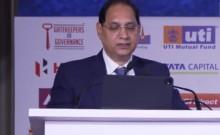
India vs Bharat, the famous debate on economics has received a new life. India's income inequality is at highest since 1922, with 22 percent income accruing to the top one percent income earners, French economists Thomas Piketty and Lucas Chancel found in their latest research paper.
"The top 1 percent of earners captured less than 21 percent of total income in the late 1930s, before dropping to 6 percent in early 1980s and rising to 22 percent today," said the paper titled 'Indian income inequality, 1922-2014: From British Raj to Billionaire Raj?'. Piketty primarily works on wealth and income inequality.
The paper revealed that when in the 1970s and the 1980s, income inequality plunged to the lowest level, the Gross Domestic Product (GDP) and per capita income growth rates also fell to one of the lowest levels.
The trend in India is typically in line with what other major economies have experienced. The paper shows that between 1980 and 2014, the income of top 0.1 percent income earners in France and China rose six times faster than the income of the bottom 50 percent.
From first Prime Minister Jawaharlal Nehru's vision making India a socialist republic to the current capitalistic underlining model, India has covered a long road. The research paper revealed that in India, the income growth rate of top 1 percent was 13 times higher than the bottom 50 percent, while it was nearly 77 times higher in the United States, the Times of India reported.
Recognising the nuances of global nature of income inequality, the two economists stated that: "India's dynamics are striking: It is the country with the highest gap between the growth of the top one percent and growth of the full population."

The paper further pointed out that the top 0.1 percent income earners represented less than 8 lakh individuals in 2013-14. "It is a sharp contrast to the 389 million individuals that made up the bottom half of the adult population in late 2013," the paper said.
The national sample survey (NSS) data also indicated that since 2004-05 inequality in India took an upturn and increased sharply thereafter.
The NSS measures consumption and underestimates the degree of inequality," TOI quoted Pronab Sen, former chief statistician of India, as saying. "If you could measure income distribution, which very few do, it is much worse," he added.
"Shining India' corresponds to the top 10 percent of the population (approximately 80 million adult individuals in 2014) rather than the middle 40 percent. Relatively speaking, the shining decades for the middle 40 percent group corresponded to the 1951-1980 period, when this group captured a much higher share of total growth (49 percent) than it did over the past 40 years," the research authors explained in their paper.








